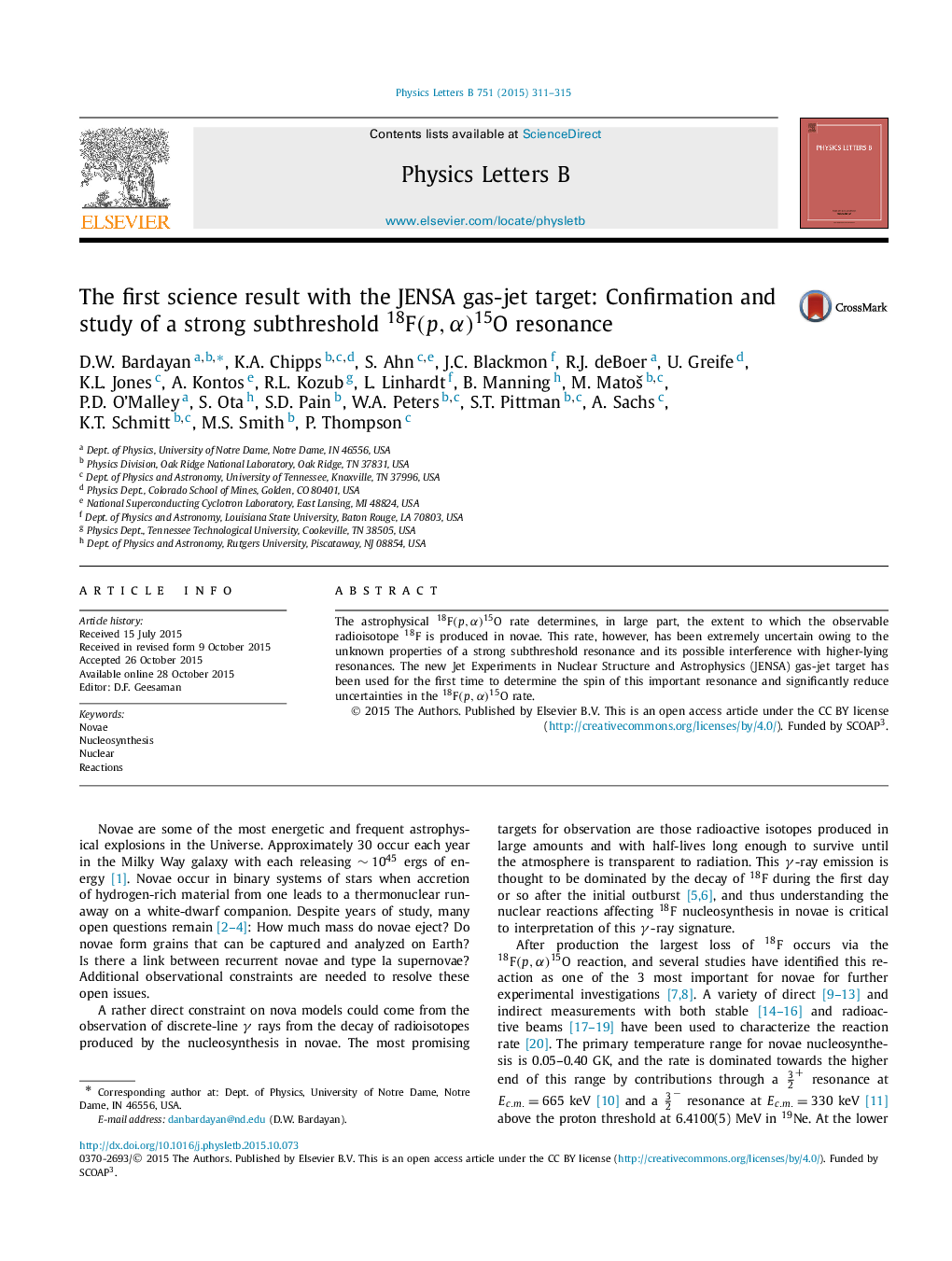| Article ID | Journal | Published Year | Pages | File Type |
|---|---|---|---|---|
| 1852591 | Physics Letters B | 2015 | 5 Pages |
Abstract
The astrophysical F18(p,α)O15 rate determines, in large part, the extent to which the observable radioisotope 18F is produced in novae. This rate, however, has been extremely uncertain owing to the unknown properties of a strong subthreshold resonance and its possible interference with higher-lying resonances. The new Jet Experiments in Nuclear Structure and Astrophysics (JENSA) gas-jet target has been used for the first time to determine the spin of this important resonance and significantly reduce uncertainties in the F18(p,α)O15 rate.
Keywords
Related Topics
Physical Sciences and Engineering
Physics and Astronomy
Nuclear and High Energy Physics
Authors
D.W. Bardayan, K.A. Chipps, S. Ahn, J.C. Blackmon, R.J. deBoer, U. Greife, K.L. Jones, A. Kontos, R.L. Kozub, L. Linhardt, B. Manning, M. Matoš, P.D. O'Malley, S. Ota, S.D. Pain, W.A. Peters, S.T. Pittman, A. Sachs, K.T. Schmitt, M.S. Smith, P. Thompson,
